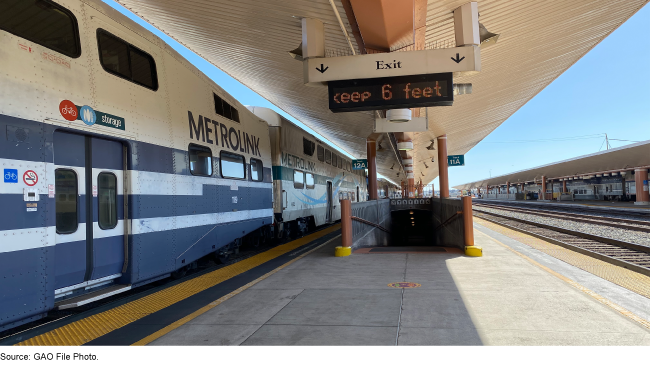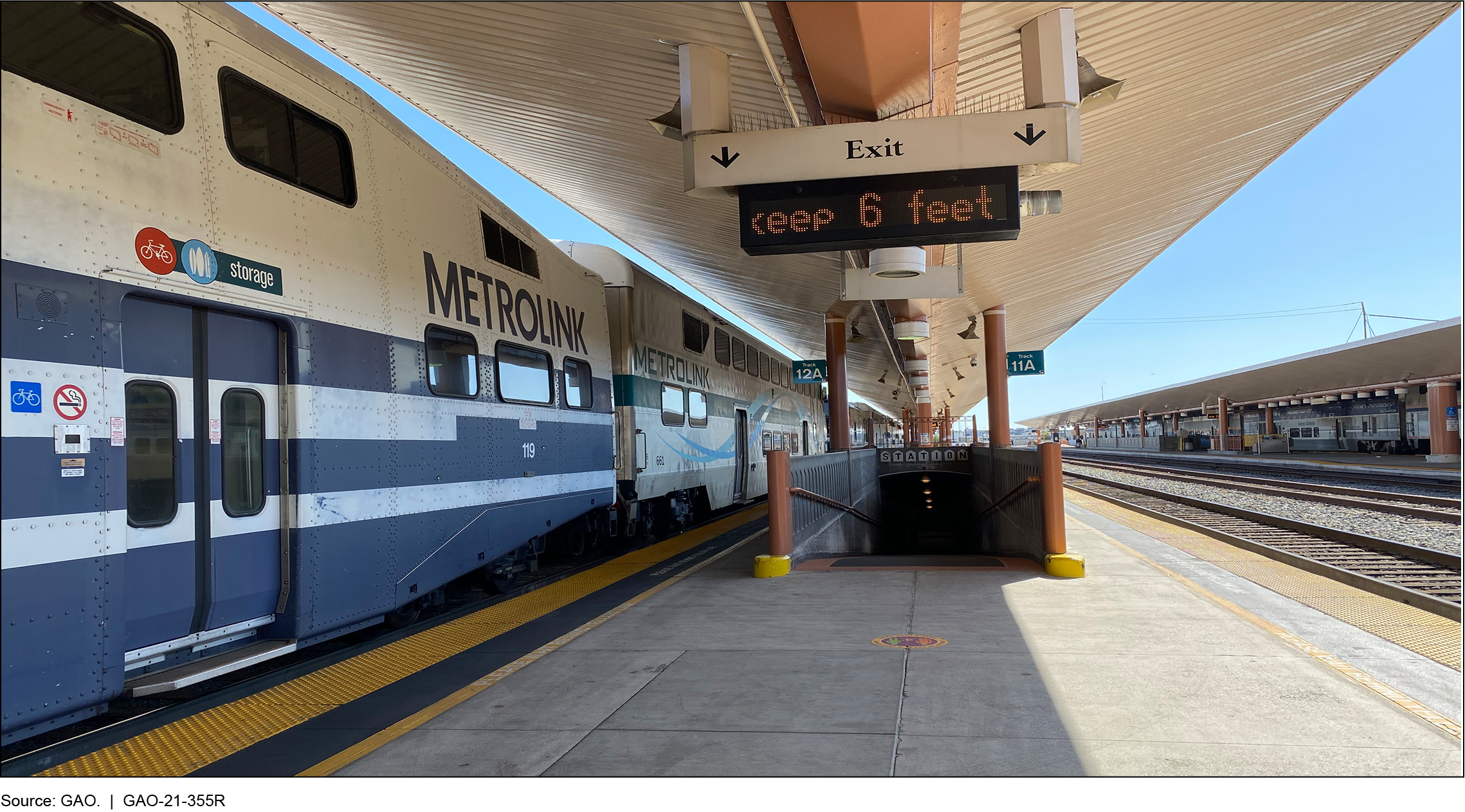Commuter Rail: Information on Benefits and Funding Challenges for Service in Less Urbanized Communities
Fast Facts
Commuter rail is a public transit alternative to driving between rural and suburban communities and city centers. Rail systems can be critical to connecting people to jobs, medical appointments, and essential services.
Commuter rail officials noted considerable system infrastructure and operational costs compared to other transit modes, making it difficult to extend commuter rail to less urbanized communities.
Additional concerns emerged during the COVID-19 pandemic due to declines in fare revenue and funding from state and local taxes. As a result, operating commuter rail will become increasingly difficult the longer the pandemic lasts.
Metrolink Rail Station at Union Station in Los Angeles, California

Highlights
What GAO Found
Commuter rail is a widely used public transit alternative to driving between suburban communities and city centers, and in many areas of the country, transit agencies have extended their service areas further out from city centers to less urbanized communities. According to stakeholders GAO spoke with—including officials from commuter rail agencies, an industry association, and local organizations—commuter rail service provides a number of economic and quality-of-life benefits. For example, commuter rail agency officials noted that several large companies chose to locate along commuter rail corridors to draw on a more regional labor market, including from less urbanized areas. Stakeholders said that commuter rail could increase mobility and transportation options, as well as access to employment and essential services for individuals who live in the service area.
At the same time, however, commuter rail agency officials pointed to considerable infrastructure and operational costs making commuter rail more expensive to provide compared to some other transit modes. Supporting commuter rail in less urbanized communities may also pose additional funding challenges. For example, less populated areas may have difficulty raising the local match required to secure federal funding for a transit project.
The ongoing COVID-19 pandemic has exacerbated existing funding challenges for commuter rail agencies. Systems have experienced significant declines in ridership, as well as in associated fare revenue and funding from state and local sales taxes. Commuter rail agencies reported to the National Transit Database that ridership declined an average of 79 percent from September 2019 to September 2020. In addition, some agencies told us that long-term shifts in commuting patterns and increased teleworking among former riders could affect commuter rail’s funding long after the immediate effects of the pandemic are over. For commuter rail agencies that rely largely on state and local funding, continued declines in tax revenues will become increasingly challenging the longer the pandemic lasts.
Why GAO Did This Study
Our review included 31 commuter rail systems that operate in the U.S., providing passengers with public transit to work, school, medical appointments, recreational activities, and more. GAO was asked to review issues related to providing commuter rail service to less urbanized areas. This report provides selected stakeholders’ views on: the benefits of providing commuter rail service to less urbanized communities, the challenges to providing such service, and the initial effects of the COVID-19 pandemic on the commuter rail industry.
GAO reviewed data and documentation from 31 commuter rail agencies; interviewed officials from 10 of the commuter rail agencies selected to provide diversity in size, geographic region, and number of stations located in less urbanized areas, among other factors; and interviewed other local stakeholders for four of the commuter rail systems.
Figure: Metrolink Rail Station at Union Station in Los Angeles, California

For more information, contact Andrew Von Ah at 213-830-1011 or vonaha@gao.gov.
